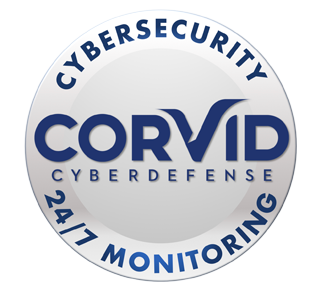 Put Retirement Planning at the Top
Put Retirement Planning at the Top
Like so many women, are you constantly juggling family, professional, and personal responsibilities? No wonder retirement planning seems to always get shuffled to the bottom of your “to do” list. But, procrastination is not the answer. Putting it off will only increase your risk of becoming one of a growing number of women who will spend their golden years struggling to make ends meet.
With the right planning, you may be able to avoid that situation.
Saving enough for a comfortable retirement can be difficult for most Americans, and it can be especially challenging for women who may, when compared with men, earn less, spend fewer years working, and live longer. Retirement income concerns are often more acute for women who are divorced, widowed, or otherwise single, as well as for those who have spent all or a significant portion of their adult years caring for children and other family members.
Clearly, most women will need to build their own retirement savings to maintain their current standard of living in retirement. Here are some strategies you can use to get started:
#1: Plan for Retirement
If your current employer does not offer a retirement plan, consider your options for securing better benefits. While companies with defined benefit plans that replace a percentage of income (based on your salary and years of service) are becoming increasingly rare, consider the long-term consequences of working at a firm that does not at least match contributions to a 401(k) or other defined contribution plan. If you are employed by a company with a traditional pension plan, find out what your benefit is likely to be and at what age you can collect the maximum benefit.
#2: Plan for Less Taxes
Take advantage of the tax benefits of qualified retirement plans and traditional Individual Retirement Accounts. Depending on your financial situation, you may find that making pre-tax contributions to a retirement account will not significantly reduce your net income. Nevertheless, contributions may decrease your current taxable income (and, consequently, your ultimate tax bill), and potential earnings are tax deferred. Taxes will be due when you begin taking distributions. If you withdraw money too early, a 10% Federal tax penalty may be due, in addition to income taxes, unless a qualified exception applies.
#3: Look at Roth IRAs
Consider the role a Roth IRA may play in your long-term plan. Contributions to Roth IRAs must be made with after-tax dollars, but potential earnings grow tax deferred. Qualified distributions made after a certain age are income tax free, provided the account has been owned for at least five years. Certain income limits apply.
#4: Consider Working Longer
Plan to work longer if necessary. A few extra years spent working may enable you to save more money for retirement, and you may want to consider working until you qualify for full Social Security benefits. In addition, your health care costs may be lower if you postpone retiring until you qualify for full Medicare benefits.
#5: Pay Off Debt
Arrange to pay off your mortgage and other debt as quickly as possible. Owning a house outright in retirement not only ensures that you will have a place to live, but it can also serve as a valuable source of equity, should you need it. To give yourself an incentive to pay off your credit cards, resolve to turn your monthly credit card payments into retirement account contributions, when the debt is paid.
#6: In Your Name
If you are married, assess the capacity of your husband’s retirement benefits to meet your future needs. Given the possibilities of divorce and widowhood, it is essential that you plan for a time when you may have to manage independently. If you are staying at home while your spouse is working, set up an IRA in your own name. Also, determine your rights regarding your spouse’s pension in the case of death or divorce, and research the effects of divorce and remarriage on your Social Security benefits.
#7: Invest More
If your family budget allows, evaluate the benefits of putting extra funds into your own IRA or 401(k) versus putting money into a savings account for your children’s college education. Your children may qualify for financial aid or low-interest loans to help pay for college, but remember, there are no grants or scholarships for retirement. Also, some funds may be withdrawn from a retirement account penalty free, if used for qualified education expenses.
#8: Make Retirement Your Business
If you own a business, consider implementing a retirement plan for yourself and your employees. A retirement plan may help you accumulate funds to live more comfortably in your retirement years, and it may also be fully deductible, thereby reducing your business’s current tax liability. If you already have a retirement plan for your business, review it with your professional advisors periodically to make sure you are taking advantage of all potential tax benefits.
#9: Consider Deferred Comp
If you are an executive and your company offers you the chance to participate in a non-qualified deferred compensation plan, consider the opportunity. Again, it will decrease your current income tax liability while providing you with an additional pool of money for your retirement.
#10: Take Good Care of Yourself Too
Prioritize saving for your own financial future, even when there are bills to pay, along with the wants and needs of your children and other family members. While taking care of others is important, you can take good care of yourself by preparing for your retirement.
Source: FME























 Megan Jones joined the ILG Financial team in 2020 as marketing director. Megan and her husband live in Fredericksburg, VA with their German Short Haired Pointer, Gus. Megan is a graduate of Longwood University and holds a degree in communications. Megan is the oldest of Dave Lopez’s three children and not only enjoys working alongside her father, but also with her cousin, Chase, who joined the ILG Financial team in 2020 as an advisor. Megan is also a fully licensed Life, Health, and Annuity agent. When not at work, Megan enjoys sitting on the back porch with family and friends enjoying food and music.
Megan Jones joined the ILG Financial team in 2020 as marketing director. Megan and her husband live in Fredericksburg, VA with their German Short Haired Pointer, Gus. Megan is a graduate of Longwood University and holds a degree in communications. Megan is the oldest of Dave Lopez’s three children and not only enjoys working alongside her father, but also with her cousin, Chase, who joined the ILG Financial team in 2020 as an advisor. Megan is also a fully licensed Life, Health, and Annuity agent. When not at work, Megan enjoys sitting on the back porch with family and friends enjoying food and music. Chase Lopez joined the ILG Financial team in 2020 as an advisor. Chase is a 2016 James Madison University graduate with a degree in management. Chase has been trained under the tutelage of Dave Lopez, who is not only the founder and managing member of ILG Financial, but also is Chase’s uncle and godfather. He also enjoys working alongside his cousin, Megan, who is Dave’s daughter.
Chase Lopez joined the ILG Financial team in 2020 as an advisor. Chase is a 2016 James Madison University graduate with a degree in management. Chase has been trained under the tutelage of Dave Lopez, who is not only the founder and managing member of ILG Financial, but also is Chase’s uncle and godfather. He also enjoys working alongside his cousin, Megan, who is Dave’s daughter. Amy Anderson joined the ILG Financial team in 2023 as the client relations coordinator. Her responsibilities include scheduling of appointments, annual check-up notifications, and annuity and required minimum distribution assistance. She is a graduate of Harding University with a degree in Computer Information Systems. Amy and her husband have two children and she enjoys reading, crocheting, music and spending time with her family.
Amy Anderson joined the ILG Financial team in 2023 as the client relations coordinator. Her responsibilities include scheduling of appointments, annual check-up notifications, and annuity and required minimum distribution assistance. She is a graduate of Harding University with a degree in Computer Information Systems. Amy and her husband have two children and she enjoys reading, crocheting, music and spending time with her family. Jessica Carson joined the ILG Financial team in 2018 as an agent. Jessica and her husband have four children, two dogs, 3 barn cats, 5 chickens, and three parakeets. She indeed loves her children and pets! When not at work, Jessica enjoys playing the piano and cello as well as traveling and spending time outside with her family, hiking, fishing, and boating.
Jessica Carson joined the ILG Financial team in 2018 as an agent. Jessica and her husband have four children, two dogs, 3 barn cats, 5 chickens, and three parakeets. She indeed loves her children and pets! When not at work, Jessica enjoys playing the piano and cello as well as traveling and spending time outside with her family, hiking, fishing, and boating. Terri Center joined the ILG Financial team in 2019 as client services manager. She handles client records, application processing, and gathering information to provide a professional and friendly experience with all of our clients. Terri is a graduate of Oakland University. She is married and has two children. She enjoys hiking, family time, and puzzle challenging video games. She also likes to share her creativity in her canvas paintings and sewing projects.
Terri Center joined the ILG Financial team in 2019 as client services manager. She handles client records, application processing, and gathering information to provide a professional and friendly experience with all of our clients. Terri is a graduate of Oakland University. She is married and has two children. She enjoys hiking, family time, and puzzle challenging video games. She also likes to share her creativity in her canvas paintings and sewing projects.